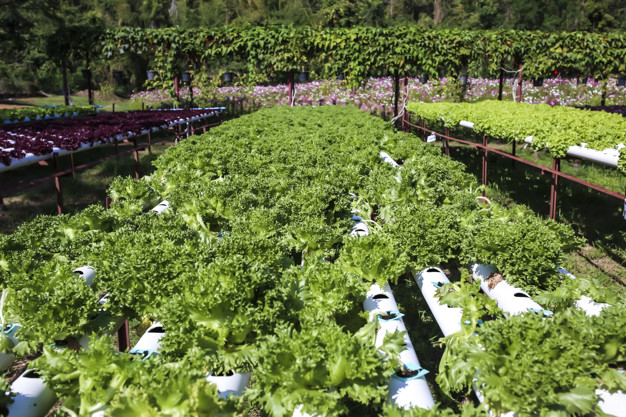top of mind news
- 5 Steps For Dealing With Anti-Mask Guests
- See How All 50 States Are Reopening (and Closing Again)
- Will Meal Kits Have Lasting Power in Quick Service?
- NPD Group: Digital Restaurant Ordering By Adults 65 And Older Increases 428% Year-Over-Year In June
- Five Ways You Can Implement COVID-19 Surcharges While Keeping Customers Happy
Poultry
 Total chicken slaughter for the week ending August 8th fell 4% below year ago levels, and bird weights were only modestly above last year. Smaller broiler production left the six-week average of ready-to-cook production down 4% (y/y) as well. Amid the tighter production schedules, the majority of the white meat complex continues to find price support into late summer. Wings have moved towards the $2.00 mark, while the chicken tender market found further gains for the 14th week in a row. Tenders are now at their highest price for any week since July of last year. Seasonally, tenders’ prices usually weaken from July into December. Yet, the chicken leg quarter markets are the lowest since 2015.
Total chicken slaughter for the week ending August 8th fell 4% below year ago levels, and bird weights were only modestly above last year. Smaller broiler production left the six-week average of ready-to-cook production down 4% (y/y) as well. Amid the tighter production schedules, the majority of the white meat complex continues to find price support into late summer. Wings have moved towards the $2.00 mark, while the chicken tender market found further gains for the 14th week in a row. Tenders are now at their highest price for any week since July of last year. Seasonally, tenders’ prices usually weaken from July into December. Yet, the chicken leg quarter markets are the lowest since 2015.
Beef
While Friday’s cattle slaughter faded, Saturday continued to be the makeup day, boosting last week’s harvest to 640k head, up 1.1% week to week but 2% below last year. Beef production, however, was 0.4% larger than year ago. Despite the lager production, beef prices found support throughout last week and additional upside potential may be likely in the near-term. But lower beef prices are forecast post-Labor Day. The middle meats should lead the price declines, along with the fat trim, but reemerging upside potential is anticipated as preparations begin for the Thanksgiving and Christmas holidays.
Pork
At 541.2 million pounds, pork production last week was up 0.8% (w/w) but was 4.5% more than a year ago. Yet, larger pork output wasn’t enough to keep prices in check, as the USDA pork cutout jumped $.039 (w/w). Gains were led by a sharp rise across the ham primal, with the butts edging higher, also. Pork bellies faded throughout the week, with Friday’s pricing closing just over $1.010. Further pork belly price weakness is expected to persist into mid-September. Pork trim 42s continued sideways last week, but modest declines may be pending.
THE SEA
Seafood
Most of the shrimp markets continue to track below year ago levels at historically attractive price levels. This is despite lackluster shrimp imports. During June, the U.S. imported 3% less shrimp than the previous year following May’s disappointing trade. Shrimp imports are expected to improve in the coming months. But better foodservice demand is likely to bring some modest support to prices.
THE GARDEN
Produce
The lettuce markets have been sideways to lower during the last week despite crop challenges. Iceberg lettuce shipments in recent weeks have been trending near 5% below the prior year. History suggests that the iceberg lettuce market could be steady in the near term before moving higher into the fall. The five-year average move for the 24-count iceberg lettuce market during the next nine weeks is an increase of 56%. The onion harvest is progressing in the Northwest which is starting to put downward pressure on the markets.
THE KITCHEN SINK
Dairy
The cheese markets were under selling pressure again last week, but blocks did find support later in the week. U.S. cheese block prices have become competitive with the global cheese markets, which spurs exports. Expect cheese prices to remain volatile. Since 2008, the average monthly cheese block price is $1.682 per pound. The CME spot butter market last week had the lowest weekly close in 14 weeks. Butter demand remains lackluster due in part to soft food service usage. Butter manufacturing has been solid due to big cream supplies. Since 2008 the average monthly spot butter price is $1.920 per pound.
Grains
Last week, the USDA raised their domestic corn and soybean crop estimates rather sharply and are forecasting feed supplies to be relatively ample deep into 2021. That said, high winds caused crop damage last week and the markets have found modest support. This could add volatility to the grain markets in the near term.
Oil
Last week nearby natural gas futures finished up (w/w) and set the highest weekly close since November. The western U.S. is experiencing record heat which is boosting natural gas fired electricity. Forecasted temperatures are still above average for the western two thirds of the U.S. There is price resistance at $2.500.













